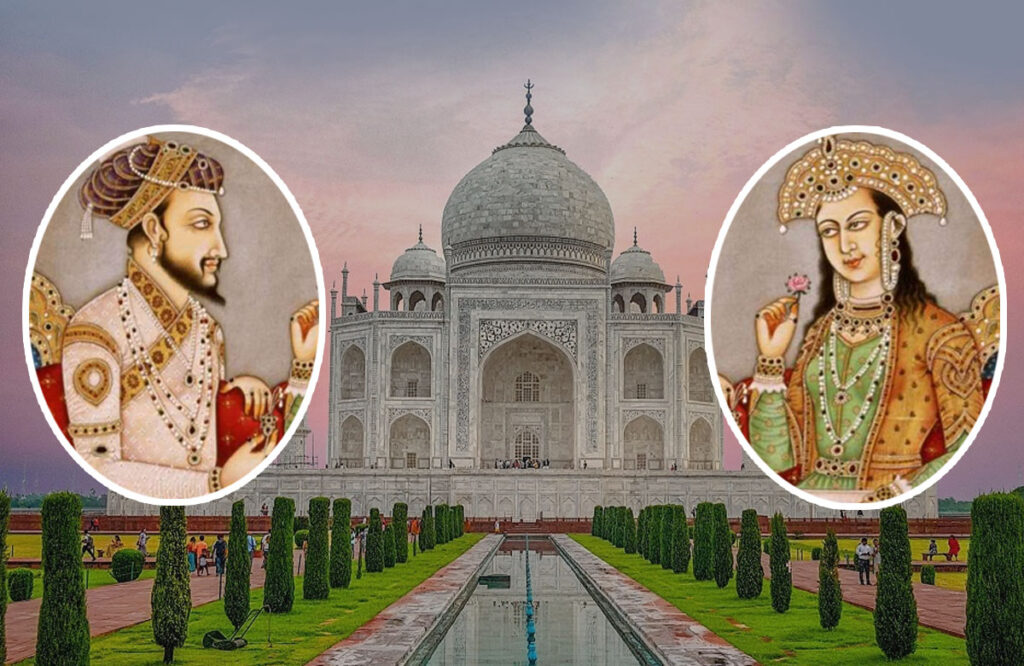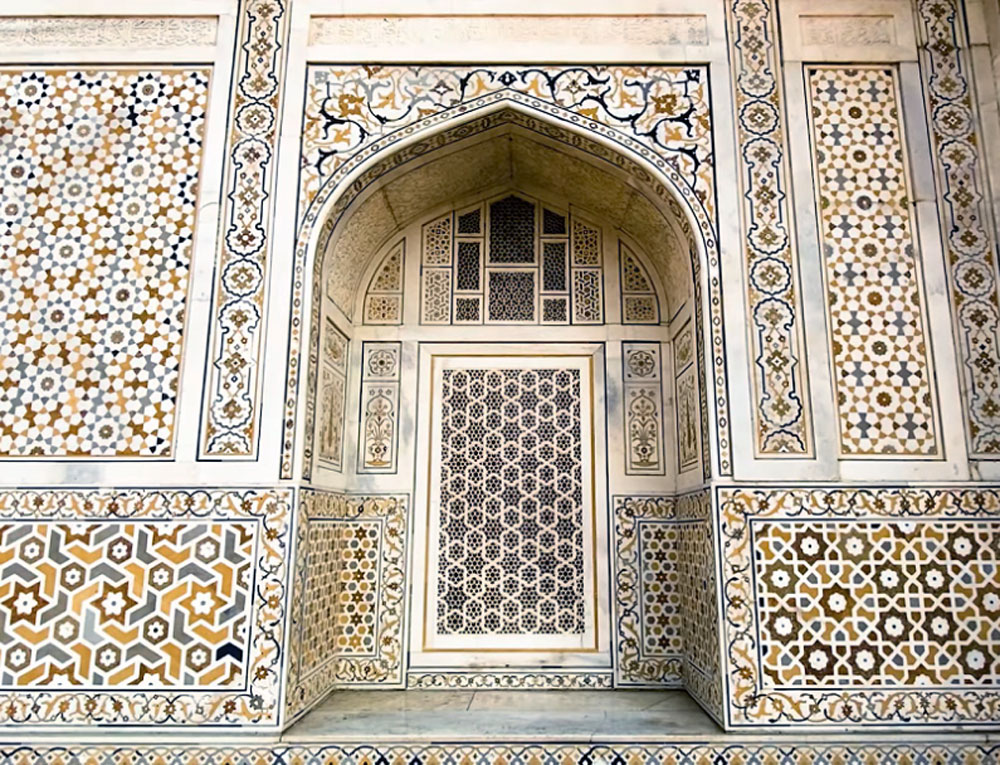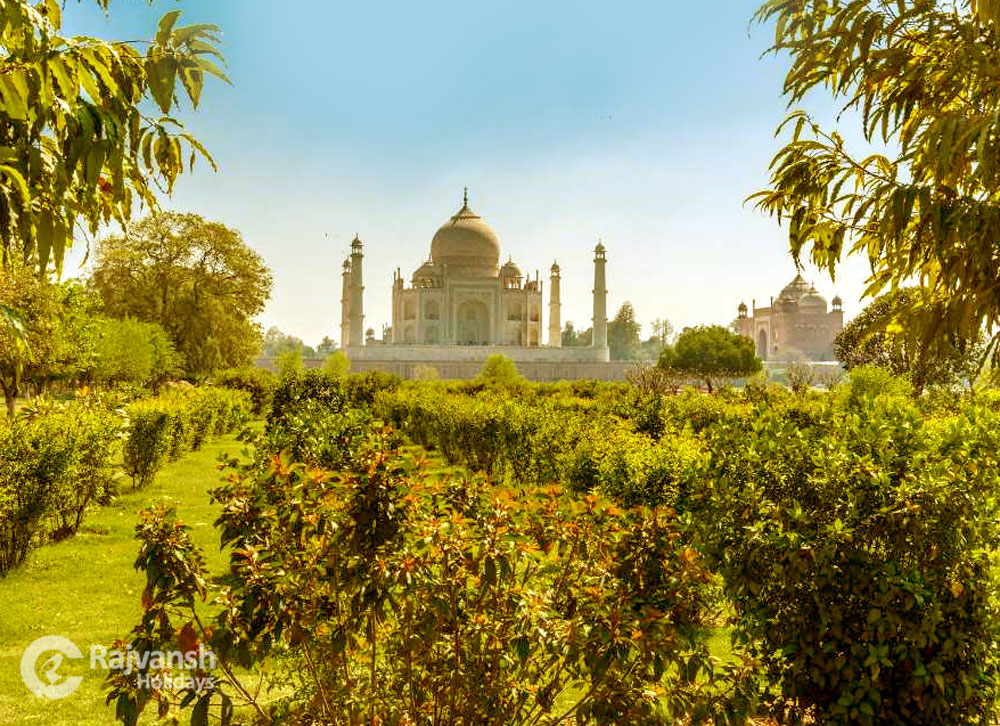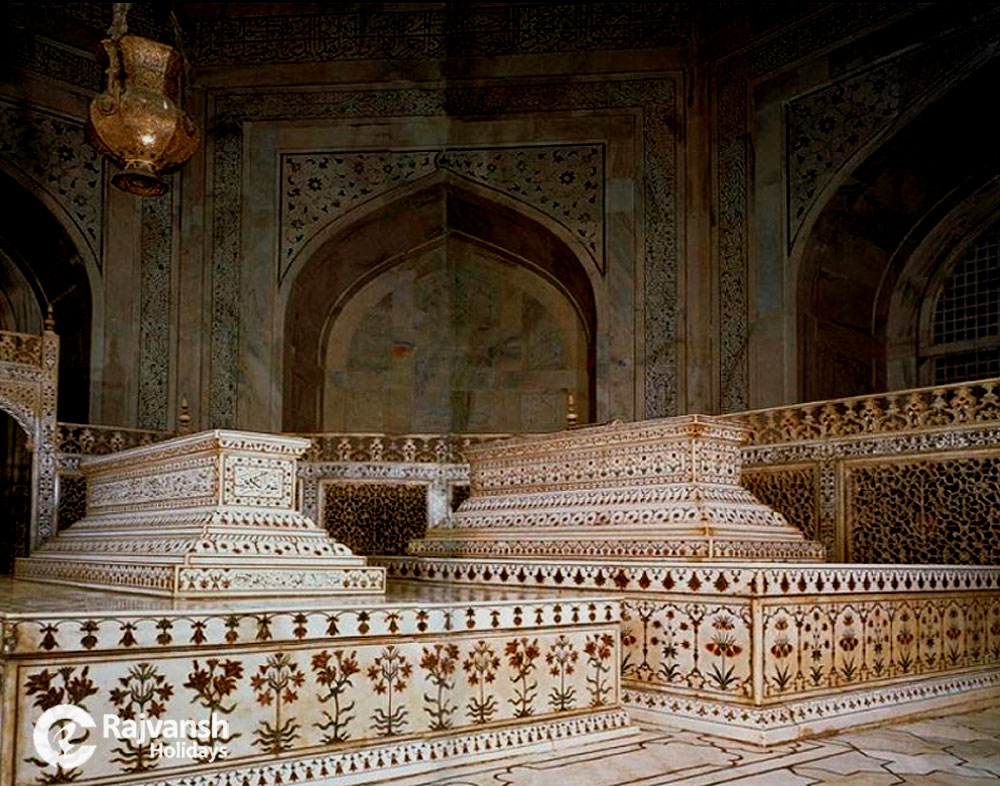A mausoleum is a sizable, sepulchral monument, usually constructed of stone, used to inter and preserve the remains of a well-known or influential person. Other forms of aboveground construction used for human burial can also be referred to as mausoleums.
Perhaps the most ambitious and famous mausoleum is the Taj Mahal in Agra, India, built of white marble. The Taj Mahal was commissioned in 1632 by the Mughal emperor Shah Jahan; it was built in memory of his beloved wife, Mumtaz Mahal, who died during childbirth. It stands as an iconic symbol of love and is recognized worldwide for its breathtaking beauty and architectural magnificence.
Constructed over approximately 22 years by a workforce of around 20,000 artisans, the Taj Mahal is renowned for its intricate marble craftsmanship, symmetrical design, and stunning gardens. The main structure is built primarily from white marble brought from different parts of India and Asia. The central dome is flanked by four smaller domes and is surrounded by four minarets that slightly tilt away from the main structure to protect it in case of an earthquake.
Inside the mausoleum, intricate carvings, inlaid semi-precious stones, and detailed designs adorn the walls and the cenotaphs (symbolic graves) of Shah Jahan and Mumtaz Mahal. The actual graves are located in a chamber below the main floor, which visitors cannot access. The Taj Mahal’s beauty is especially enchanting during sunrise and sunset, when the changing light accentuates its ethereal appearance. It’s recognized as a UNESCO World Heritage Site and remains one of the most visited and photographed landmarks globally, attracting millions of tourists each year.
The mausoleum of the Taj Mahal
Shah Jahan ordered the construction of the Taj Mahal in 1631 as a memorial to his late wife, Mumtaz Mahal, who passed away on June 17 of that year while giving birth to Gauhara Begum, their fourteenth child. The surrounding structures and garden were built five years after the mausoleum’s completion in 1648, when construction on the site began in 1632. The love tale that served as the model for the Taj Mahal is depicted in the imperial court records of Shah Jahan’s sorrow following Mumtaz Mahal’s passing. Historians of today Muhammad Amin Qazvini, Abdul Hamid Lahori, and Muhammad Saleh Kamboh claim that he did not treat other people with the same degree of love that he had her throughout her lifetime. His anguish caused him to abstain from royal matters for a week, as well as to stop wearing ostentatious clothing and music for two years. Shah Jahan was mesmerized by the splendor of the property on which Raja Jai Singh I’s house stood on the southern edge of Agra. Shah Jahan selected this location for the construction of Mumtaz’s mausoleum, and Jai Singh consented to give it to the emperor.

Architecture: The mausoleum is an exemplary display of Mughal architecture, combining elements of Persian, Indian, and Islamic styles. Its central feature is the white marble dome, flanked by four smaller domes, and it’s surrounded by four tall minarets at each corner of the plinth. The structure exhibits meticulous symmetry and intricate detailing.
Construction Materials: The primary construction material used for the Taj Mahal is white marble, which was sourced from various regions of India and Asia. The marble was intricately carved and inlaid with semi-precious stones, creating elaborate floral patterns, calligraphy, and geometric designs.

Interior: The interior of the mausoleum is adorned with exquisite carvings, intricate marble work, and inlaid precious stones. The cenotaphs (symbolic graves) of Mumtaz Mahal and Shah Jahan are placed in the central chamber, below which their actual graves lie in a chamber at a lower level, inaccessible to visitors.
Gardens and Surroundings: The mausoleum is surrounded by meticulously planned gardens, known as the Charbagh (four gardens), reflecting the concept of paradise in Islamic architecture. The gardens are divided into quadrants by water channels, leading to a reflective pool that perfectly mirrors the Taj Mahal.

The Taj Mahal is often regarded as the ultimate symbol of love. Shah Jahan’s deep love for Mumtaz Mahal is immortalized in the mausoleum’s construction, making it a monument to eternal love and devotion. It is recognized as a UNESCO World Heritage Site. The Taj Mahal is not only a symbol of love but also holds immense cultural and historical significance, representing the architectural prowess and artistic heritage of the Mughal era in India. The Taj Mahal mausoleum remains a masterpiece of architectural beauty, craftsmanship, and enduring love, drawing millions of visitors from across the globe who come to admire its splendor and learn about its captivating history and significance.
Tour Book Taj Mahal Tours CLICK HERE
Please feel free to contact us at any time for any travel information, tour bookings, tickets, transportation, or hotel bookings in India. Just call or WhatsApp us at +91 98370 44720. You can also visit our official website: www.tajmahaltourguide.com

